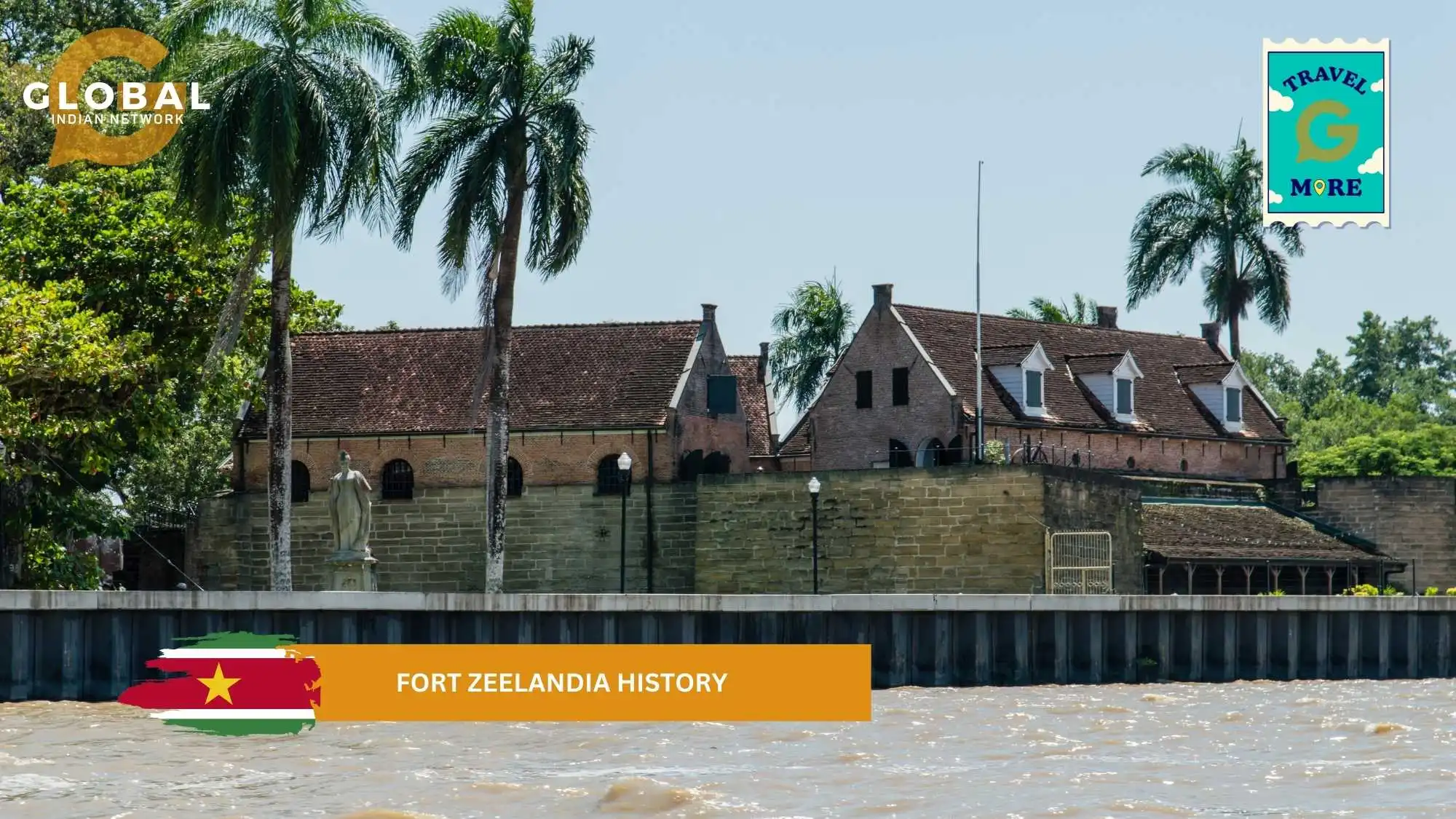Fort Zeelandia is a prominent landmark in the capital city of Paramaribo. Built-in the 17th century through a combination of many imperial and colonial rulers, the fort stands as a reminder of Suriname’s colonial era. Standing on the river bank, the fort houses the National Surinaams Museum today. However, the National Monument fort has centuries of forgotten history to explore, making it a significant cultural landmark.
This blog explores the dark and colonial snippets of Fort Zeelandia history.
Table of Contents
Tracing Fort Zeelandia History
Origins and Early Establishment
In the early 17th century, Suriname was a small English colony on the banks of the Suriname River. It was here that the fort was initially built by a group of French traders, and later taken over by the British under the rule of Major Anthony Rowse. After the British took over in 1651 – fort was reinforced and renamed to Fort Willoughby, after the Governor of Barbados – Francis Willoughby.
However, the British era did not last long as the Dutch came shortly after. In 1667, the Dutch administration declared war against the British colony to capture the small trading outpost. The war lasted just 3 hours before the British waved the white flag and under the leadership of Dutch Admiral Abraham Crijnsen, the fort was renamed Zeelandia, thus creating the Dutch colony of Suriname.
The next chapter in Fort Zeelandia history was, unfortunately, that of neglect and ruin, as the fort was left abandoned after the construction of Fort Nieuw Amsterdam. The new fort, which was built down the clay-coloured river, was to be used for any military endeavours, leaving Zeelandia decrepit. Zeelandia, built in 1640 – the original wooden fort was now deserted, a condition in which it stayed up until 1872 when it was converted to a prison.

Change Through Time
After being used solely as a prison for a century, the fort was converted in 1972 – Surinaams Museum then occupied the citadel. The fort was then ransacked and used as a military headquarters beginning in 1975 while also remaining functional as a prison. This era marks a dark time in Fort Zeelandia history, as it saw the killing of 15 journalists and lawyers in 1982 under the dictatorship of Desi Bouterse. However, following Bouterse’s removal in 1995, the fort was returned to the Surinaams Museum. The fort was renovated in 2004, and in 2009, the ‘Bastion Veere’ of the fort was marked as a tribute in a memorandum to all those who lost their lives in the murders of 1982.
The fort marks a critical importance in the history of Paramaribo, with the downtown parts of the city being built around the river and the ground where the fort stands. Having been constructed as a small outpost in 1640, the fort has undergone many changes in its history. From being colonised by the Dutch, being abandoned, and serving as a prison, a museum, and a memorial, Fort Zeelandia history is truly a remarkable reminder of Suriname’s colonial times.
Architecture and Design
Fort Zeelandia’s architecture and design reflect both its colonial origins from the country’s earliest times and its strategic military purpose. The fort is a pentagonal structure with five corners, each reinforced with a defensive bastion. These bastions were essential for the fort’s protection, allowing guards to survey the surroundings and defend the fort from any angle. The fort is encircled by a 15-foot-high stone wall, which adds to its imposing and impenetrable appearance. This solid stone wall was constructed to ensure that the fort could withstand attacks, with only one entrance gate, further enhancing its defensibility. A barbed wire atop the gate adds a layer of security to this day.
Inside, the fort’s layout features a central courtyard, marked by a 5-pointed star design, which acts as the heart of the structure. Surrounding the courtyard are red-brick, three-storey buildings reminiscent of traditional Dutch colonial architecture. These buildings give the impression that they’ve been transported directly from the Netherlands, blending Suriname’s colonial history with its unique geographical setting. The buildings once served various purposes, including as warehouses and a pharmacy, and some are now part of the fort’s museum. (Source)
Fort Zeelandia: History and Today
After having gone through dark and decrepit times in its history, Fort Zeelandia today is a wonderful representation of the ethnic cultures of the country. The museum now houses the national museum, a memorial to all those who lost their lives in the December murders of 1982, a Museum cafe, a museum shop and an attractive restaurant. The onsite restaurant, Baka Foto, is a lovely place that emphasises Suriname’s culinary nature, arts, and culture. The fort overlooks the river promenade, making it an excellent location to have a walk. The fort with benches also has exhibits that exist from the great sugar culture of Suriname.
Conclusion
In conclusion, Fort Zeelandia history has seen its fair share of ups and downs. From being abandoned to serving as a prison and site for the horrible December killings of 1982, the fort now houses the National Museum and a lovely onsite restaurant along with other cafes and shops. While the history of the fort may be dark and daunting, today it serves as a must-visit tourist attraction.

FAQs
What is the Significance of Fort Zeelandia?
Fort Zeelandia is a symbol of Suriname’s colonial past, serving as both a military stronghold during Dutch occupation and the site of key historical events, including the infamous December Murders of 1982.
How Old is Fort Zeelandia?
Fort Zeelandia was built by the Dutch in 1640, making it nearly 400 years old.
What is Fort Zeelandia History?
Initially constructed as a trading post by the French, the fort was later taken over by the Dutch and used as a defence structure. It became a key site during the colonial era and later gained notoriety for the December Murders during Suriname’s military dictatorship in 1982.









